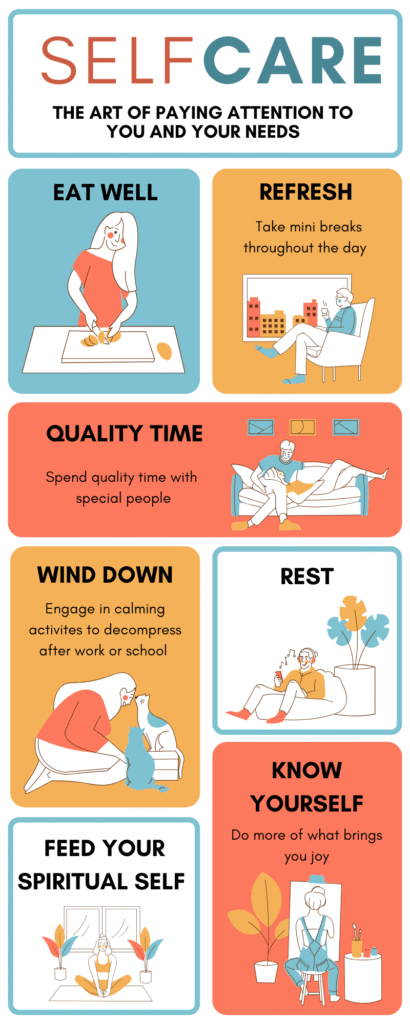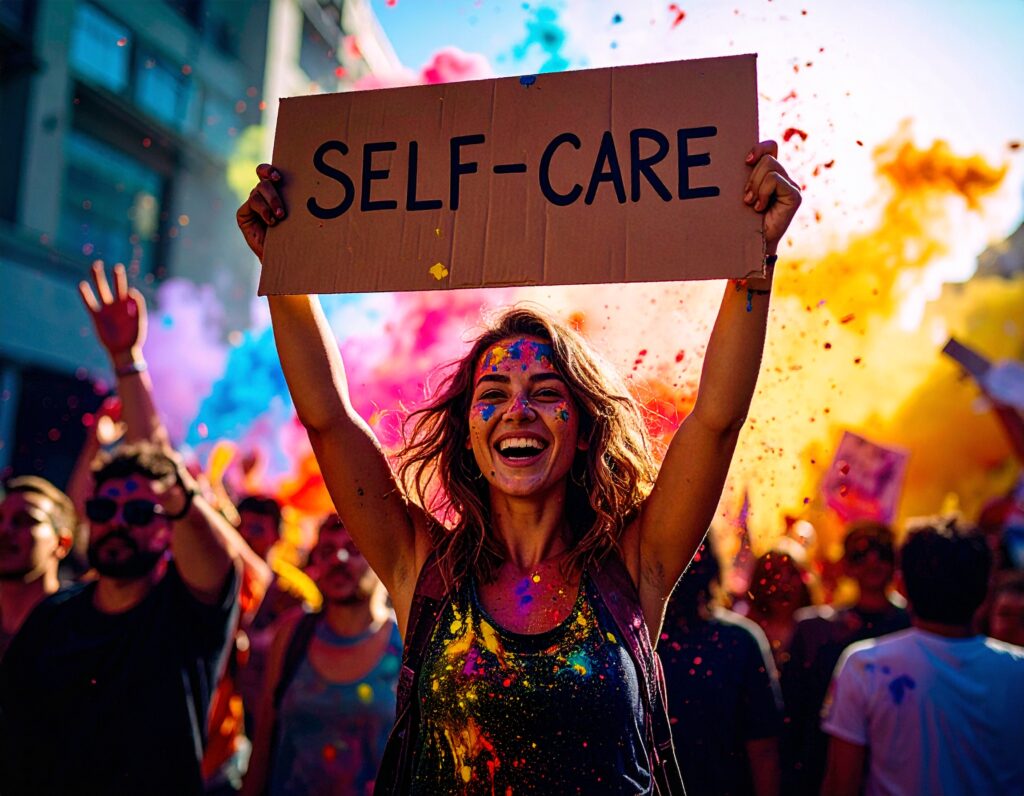Introduction: More Than Bubble Baths – Self-Care as Self-Agency
Most importantly, self-care is the bedrock of self-advocacy. When you know your own needs – physically, emotionally, and practically – you build the confidence and clarity needed to speak up for yourself. This is where true self-agency begins: when you own your story, instead of having it written for you.

The Shift: From Surviving to Self-Agency
We’re often taught (explicitly or not) to ignore our needs or rely on someone else to “fix” us or meet them for us. But there’s a quiet power in tuning in and learning to meet your own needs first.
Self-agency means being an active participant in your own life, rather than feeling at the mercy of circumstances or other people. It begins with self-awareness: recognising your needs, strengths, limits, and what makes you feel alive.
“The shift from disorder to difference is also a shift of power. When neurodivergent people are empowered, they will astound.”
Why a Self-Care Plan? The Practical Case
- Identify and articulate your needs: Sleep, rest, hydration, food, stimulation, downtime.
- Spot sensory preferences and tolerances: Know what helps you regulate, what overwhelms, and how you recover.
- Manage overstimulation and overwhelm: Create buffers and safety nets for hard days.
- Keep life ticking: Finances, work, home responsibilities, and the admin of daily life.
- Make space for joy: Prioritise things you enjoy – not as an afterthought, but as fuel.
It’s about gently noticing what’s working (or not), getting curious about your patterns, and being proactive about the things that make life easier – or at least more manageable.

Self-Care as Fuel, Not a Luxury
Many of us have been conditioned to view pleasure or rest as a reward for “good behaviour” or for getting through our to-do list. In reality, doing things you enjoy is not optional for thriving – it’s the fuel you need to get through life’s harder bits.
- Enjoyment and play help replenish motivation and emotional reserves.
- Creative or sensory self-care (art, music, movement, nature) soothes the nervous system and supports focus.
- Time with safe people – community, chosen family, pets – anchors you and offers belonging.
Building these into your plan is an act of self-worth, not self-indulgence.
Knowing Yourself: The Heart of Self-Advocacy
You can’t advocate for needs you haven’t yet named. Developing a self-care plan is an act of self-discovery. It helps you answer questions like:
- What helps me recover after a tough day?
- What are my early signs of burnout or overwhelm?
- How much sleep do I really need?
- What sensory inputs help me feel calm – or make me feel frazzled?
- Which daily tasks trip me up, and which come easily?
This clarity is what enables true self-advocacy:
You learn to ask for what you need – at work, in relationships, with health providers – because you’re clear on what supports you.
Identity-Building: You Are Not Your Responsibilities
A self-care plan is a mirror: it reflects back not just what you have to do, but what you love to do and what makes you, you. It helps move you from a survival mindset (“What do I have to do?”) to a discovery mindset (“What do I want more of?”).

Step-by-Step: Creating Your Own Self-Care Plan
Ready to try? Here’s a flexible, neurodivergent-friendly framework:
- Check the Foundations
- How are you sleeping? Eating? Hydrating?
- When do you feel most rested or energised?
- Map Your Sensory Landscape
- What lights you up (music, textures, movement, light)?
- What’s overwhelming (crowds, noise, scratchy clothes)?
- How do you recover from sensory overload?
- Spot Your Overwhelm Triggers
- What situations or times of day are hardest?
- What helps prevent meltdown or shutdown?
- Are there early warning signs you can learn to notice?
- List Essential Responsibilities
- What are your non-negotiables (work, bills, admin)?
- What’s genuinely urgent vs. what’s inherited expectation?
- Can you delegate, automate, or get support?
- Fuel for Your Soul
- List three things that bring you joy – even for a few minutes.
- How can you make these small, regular parts of your week?
- Emergency Self-Compassion Kit
- Who can you call or message for support?
- What words, reminders, or sensory comforts help you self-soothe?
- Have a “bad day” plan: What’s good enough when everything is hard?
Real-World Example: Anna’s ADHD Self-Care Plan
Anna (not her real name), late-diagnosed with ADHD, started journaling when she felt best. She realised late nights left her frazzled, but a 10-minute morning walk helped her focus. She set alarms for meals and swapped scrolling for doodle practice during breaks. And also noticed she needed time alone to recover from busy days, and asked her partner for a 30-minute “buffer” before chatting after work. Anna also kept a list of “joy-sparks” – music, nature podcasts, and silly dancing – on her phone, using these as resets when she felt herself spiralling.

It’s Not About Going It Alone
Self-care and self-advocacy don’t mean “do it all yourself.” In fact, learning your needs can help you build supportive systems – with friends, family, employers, or therapists. It’s a way of saying: I matter, and my needs are real.
“By being supported and informed, they implemented self-help strategies, improved self-concepts, and most significantly, self-acceptance. The freedom to live their lives as they are.”
The Takeaway: Owning Your Narrative
When you know and honour your own needs – without apology – you reclaim your agency and own your narrative. You become the expert on you. That’s the most powerful form of self-advocacy there is.
Ready to take the next step?
If you’d like support in building your own self-care and self-advocacy toolkit, explore our services or book a discovery call. You don’t have to do it alone. Your journey matters.
References:
- Ho, E. (2022). “I found it to be helpful to be real”: An Interpretative Phenomenological Analysis of Experiences of Therapists with ADHD. Leeds Beckett UniversityELENAHO_LBUM2_Dissertat….
- Hallowell, E. & Ratey, J. (2021). ADHD 2.0.
- Sedgwick, J. A. et al. (2019). The positive aspects of attention deficit hyperactivity disorder: a qualitative investigation of successful adults with ADHD.
